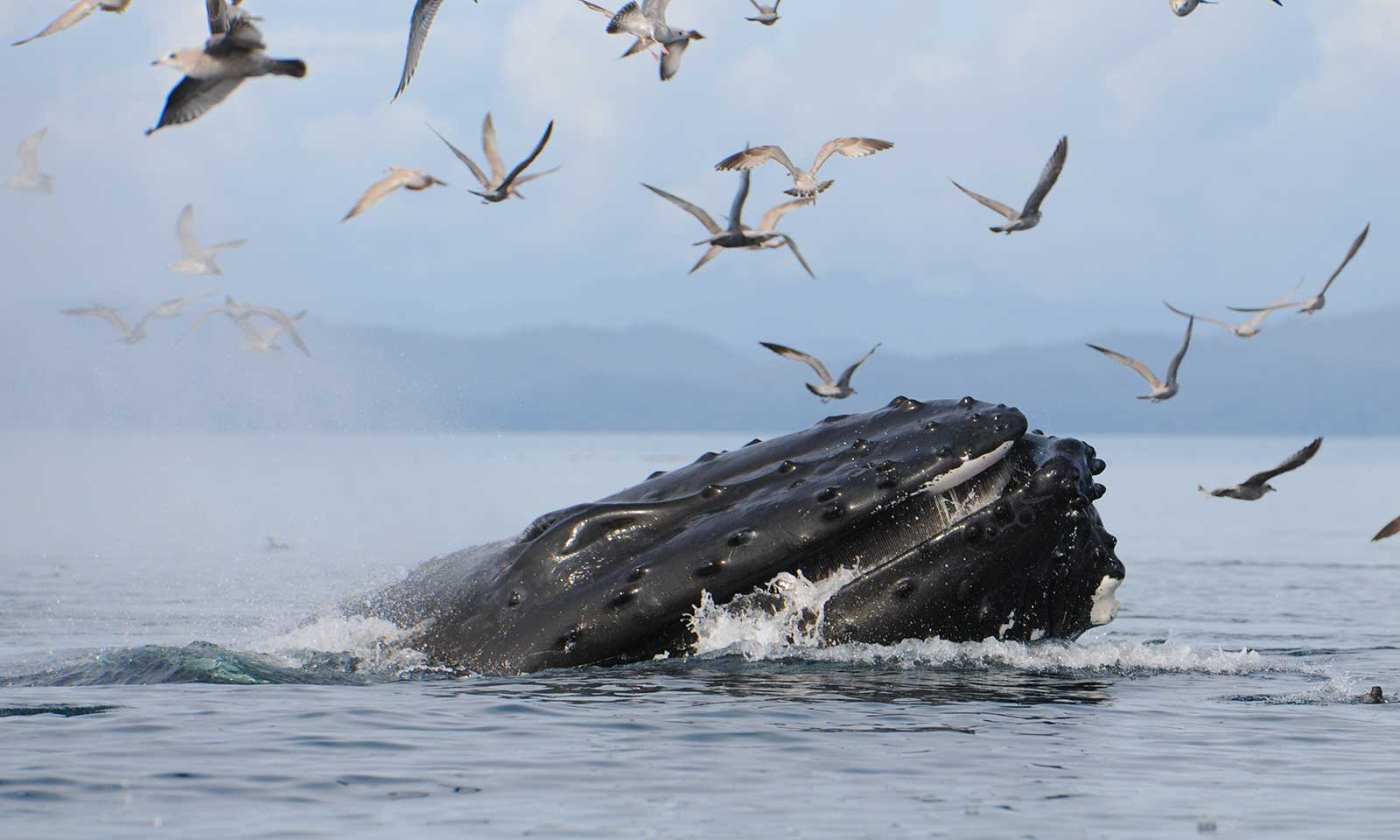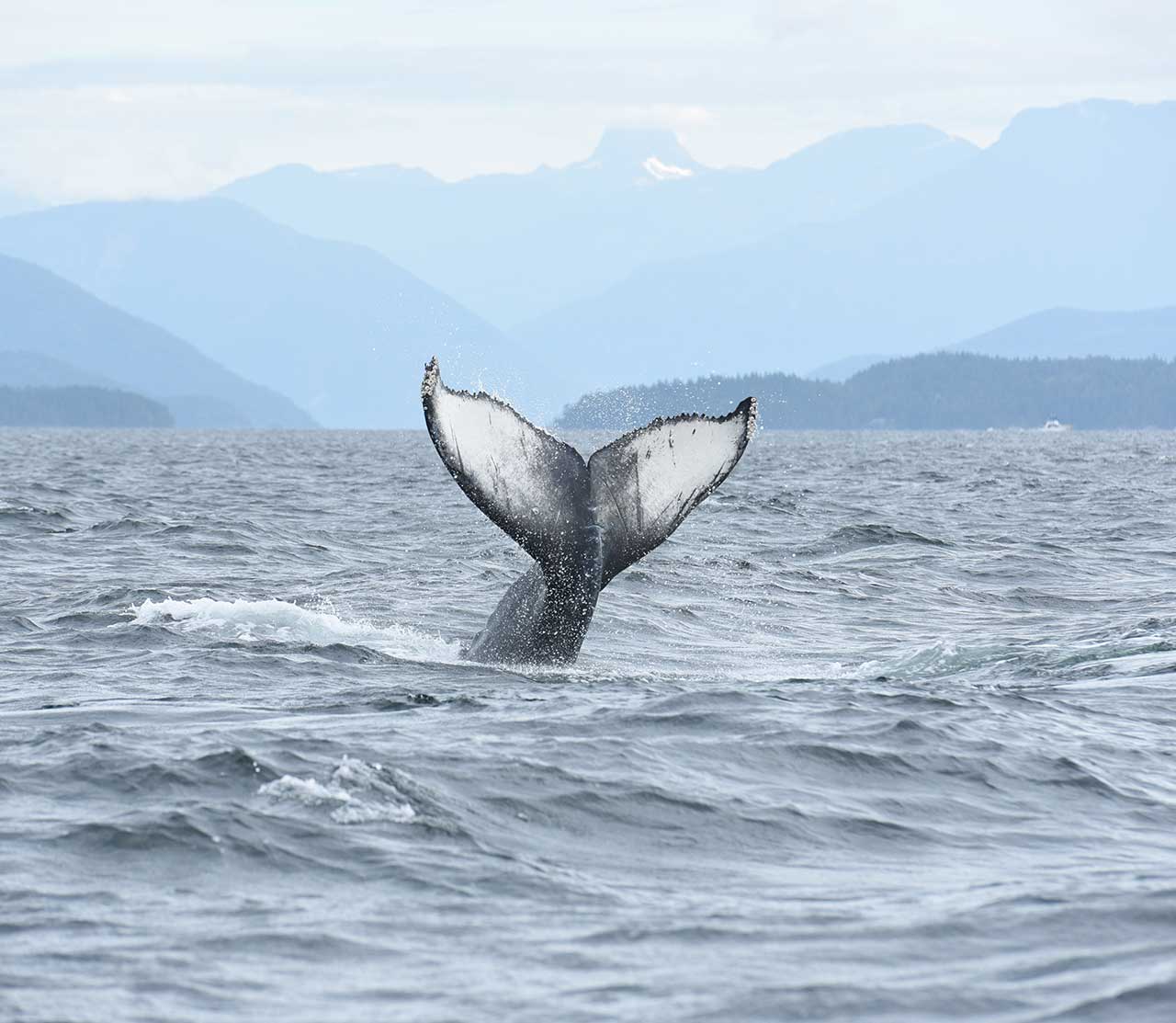
Pulteney (BCZ0297) lunge-feeding ©MERS, MML-42
Contribute Data
Support conservation and research
Help the whales by contributing data
What we are able to learn about Humpbacks is greatly enhanced by people helping us know who the whales are. You can help by contributing photos of the whales’ flukes, dorsal fins, and/or mouths (taken from legal distances).
We coordinate the efforts of the Canadian Pacific Humpback Collaboration (CPHC) to maintain a province-wide catalogue for Humpback Whales sighted off the coast of British Columbia. The CPHC catalogue and accompanying database allow for further research collaboration into the Humpback Whales documented in Canadian Pacific waters. All photo contributions feed into this effort, and also, the Pacific-wide collaboration known as “Happywhale”.
Great thanks to all who contribute data!
How to relay whale data
- If on a boat, remain at least 200m from the whale.
Visit Laws & Boater Safety to know the Regulations and best practices for vessel operation around marine mammals. - Photograph the underside of the tail (fluke) and/or dorsal fin. The ideal is to document both. See below for how Humpback Whales are identified as individuals.
- Submit photos and sightings information through the Humpback Data Form below (date, time, location, and photographer’s name)
or to data@mersociety.org. - For Minke Whale sightings, email photos and information to data@mersociety.org.

Splashy, Nick’s 2020 calf ©MERS, MML-42
How whales are identified
The easiest way to recognize an individual Humpback Whale is by the pigmentation and trailing edge of their fluke (underside of their tail). But Humpbacks often do not lift their tails. This is why we also identify them by the shape and markings of their dorsal fins.
Some Humpbacks have learned a new feeding strategy we call “trap-feeding”. When they trap-feed, it is often only possible to see their mouths. Therefore, we also identify and catalogue Humpback Whales by their mouth markings.
Humpbacks are assigned an alphanumeric name by the CPHC. We also give the whales nicknames for distinctive markings on their flukes or dorsal fins. This is to aid recognition of Humpbacks as individuals and to create greater public engagement and thereby greater potential to reduce threats.
Whale Report Alert System
Alerting large vessel traffic
By using the Ocean Wise Sightings Network’s WhaleReport app, you help alert large commercial vessels to the presence of whales. These alerts are relayed in real-time to increase the potential of large vessel mariners in the area of the report, to increase vigilance and take measures to reduce impacts to whales.